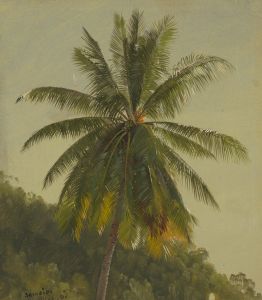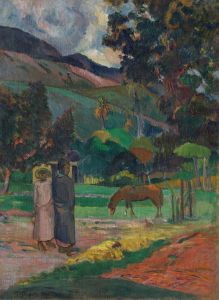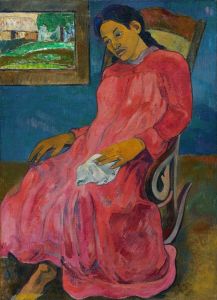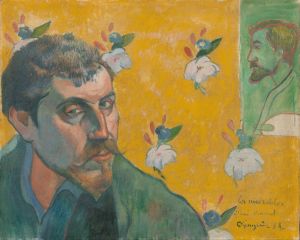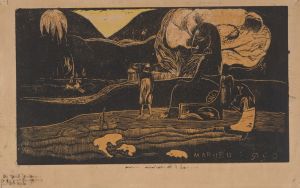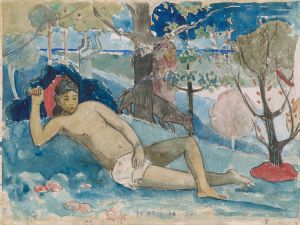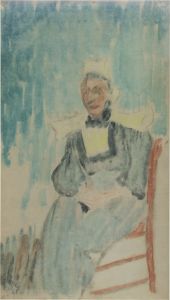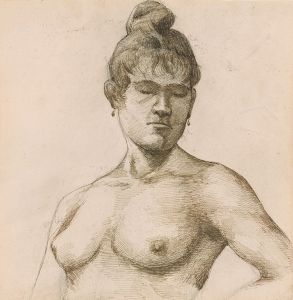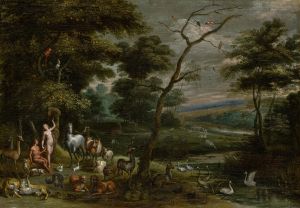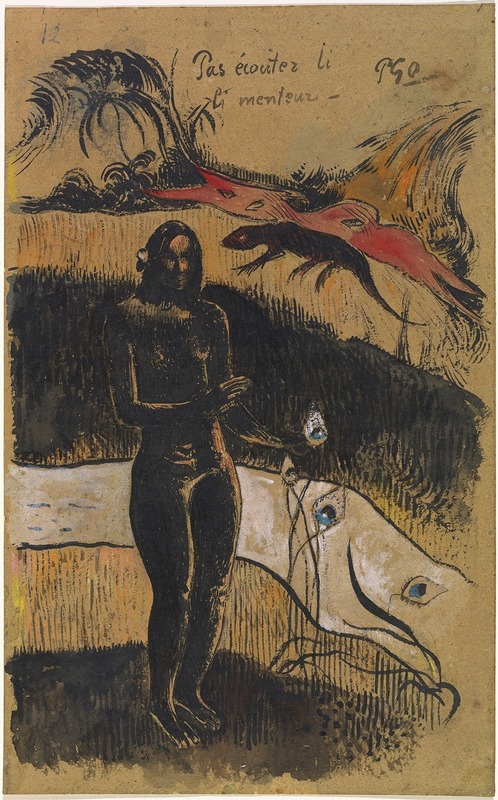
Nave Nave Fenua
A hand-painted replica of Paul Gauguin’s masterpiece Nave Nave Fenua, meticulously crafted by professional artists to capture the true essence of the original. Each piece is created with museum-quality canvas and rare mineral pigments, carefully painted by experienced artists with delicate brushstrokes and rich, layered colors to perfectly recreate the texture of the original artwork. Unlike machine-printed reproductions, this hand-painted version brings the painting to life, infused with the artist’s emotions and skill in every stroke. Whether for personal collection or home decoration, it instantly elevates the artistic atmosphere of any space.
"Nave Nave Fenua" is a painting by the French post-impressionist artist Paul Gauguin, created in 1892 during his first stay in Tahiti. The title of the painting translates to "Delightful Land" in Tahitian, reflecting Gauguin's fascination with the island's culture and landscape. This work is a significant example of Gauguin's efforts to capture the essence of Tahitian life and his departure from European artistic conventions.
Paul Gauguin moved to Tahiti in 1891, seeking to escape European civilization and immerse himself in what he considered a more "primitive" and pure environment. His time in Tahiti profoundly influenced his art, leading to a distinctive style characterized by bold colors, strong outlines, and simplified forms. "Nave Nave Fenua" exemplifies these stylistic elements, showcasing Gauguin's innovative approach to composition and color.
The painting depicts a serene and idyllic scene, featuring a group of Tahitian women in a lush, tropical landscape. The figures are arranged in a harmonious composition, with their poses and expressions conveying a sense of tranquility and connection to nature. Gauguin's use of vibrant colors and flattened perspective creates a dreamlike quality, emphasizing the exotic and mystical aspects of the Tahitian setting.
Gauguin's interest in Tahitian mythology and spirituality is evident in "Nave Nave Fenua." The painting incorporates symbolic elements that reflect the artist's fascination with the island's cultural heritage. For instance, the presence of the women in the natural landscape can be interpreted as a representation of the close relationship between the Tahitian people and their environment. Additionally, Gauguin often included references to local legends and religious beliefs in his work, although specific mythological references in "Nave Nave Fenua" are not explicitly documented.
The painting is also notable for its departure from the naturalistic representation of figures and landscapes that characterized much of Western art at the time. Instead, Gauguin embraced a more abstract and symbolic approach, influenced by his exposure to non-Western art forms. This shift is evident in the stylized depiction of the figures and the use of color to convey emotional and spiritual resonance rather than realistic detail.
"Nave Nave Fenua" is part of a broader body of work that Gauguin produced during his time in Tahiti, which includes other notable paintings such as "Where Do We Come From? What Are We? Where Are We Going?" and "The Spirit of the Dead Watching." These works collectively represent Gauguin's exploration of themes related to identity, spirituality, and the human condition, filtered through the lens of his Tahitian experience.
Today, "Nave Nave Fenua" is recognized as an important example of Gauguin's contribution to the post-impressionist movement and his role in the development of modern art. The painting is held in various private and public collections, and it continues to be studied and admired for its innovative style and cultural significance. Gauguin's work in Tahiti remains a subject of interest for art historians and enthusiasts, offering insights into the artist's quest for meaning and his enduring impact on the art world.






